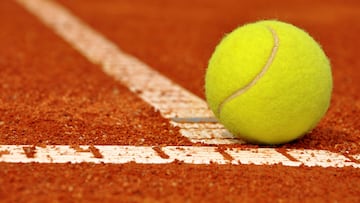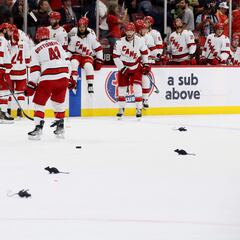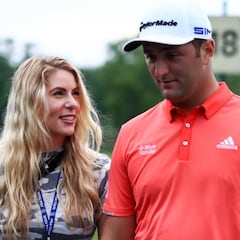What is a clay court? What is the difference between playing on clay, grass, and hard courts?
The clay season is coming to a close with the second Grand Slam tournament of the year, the French Open, where quite a few players have options to lift the trophy.

One of the most important tournaments in world tennis will start on Sunday, as the 127th edition of the French Open will take place in Paris.
It’s the second major of the season after the Australian Open, where Rafa Nadal has proven to be, by far, the best player in the competition’s history.
The Spanish maestro, who won’t be able to feature this year due to a hip issue, has won the French Open title 14 times, as he has always loved playing on clay and the conditions in Paris suit his game perfectly.
Clay courts are known to be the slowest surface in tennis. Powerful serves are easier to return, as the ball travels at a more reduced speed.
Since the game is slower on this surface, points tend to be longer and fans can witness more baseline exchanges. That scenario benefits players who have a solid defensive game, who also have more time to stop and hit the ball.
This year's Roland-Garros will be the first without Rafa or Roger since... 1998.
— Roland-Garros (@rolandgarros) May 19, 2023
🥹 pic.twitter.com/DCfTv1f4Zz
Grass and hard courts, a different speed
After Roland Garros, players will need to quickly get used to the calendar’s exigencies. Once the clay season is over, they will play in grass tournaments, and after Wimbledon, the hard-courts tournaments will come into play again.
The grass court season is the shortest one, and that’s because this kind of surface has a high cost and maintenance.
The short-cut grass surfaces are the fastest in the tennis circuit, with low-ball bounces and short rallies. Players who heavily rely on their efficient and powerful serves love playing on clay, as they have a big advantage over players who are more solid from the baseline.
All four of the Grand Slam tournaments once used grass courts, but Wimbledon currently is the only one that still features grass courts.
Meanwhile, hard courts are the most common. They are composed of mixtures of asphalt and concrete with an acrylic surface layer to seal the surface.
Related stories
Differently from clay and especially, grass, the ball bounces higher here, although, it travels at a faster speed than in clay conditions.
Hard courts are probably the most all-around ones, as it’s a mix of both clay and grass, and most of the ATP tournaments are played on this surface. The US Open and the Australian Open are the two majors with this kind of court.
Classic @NickKyrgios.
— Wimbledon (@Wimbledon) July 3, 2022
The underarm fake followed by an ace 💥#Wimbledon pic.twitter.com/4mOD8WgB8J

